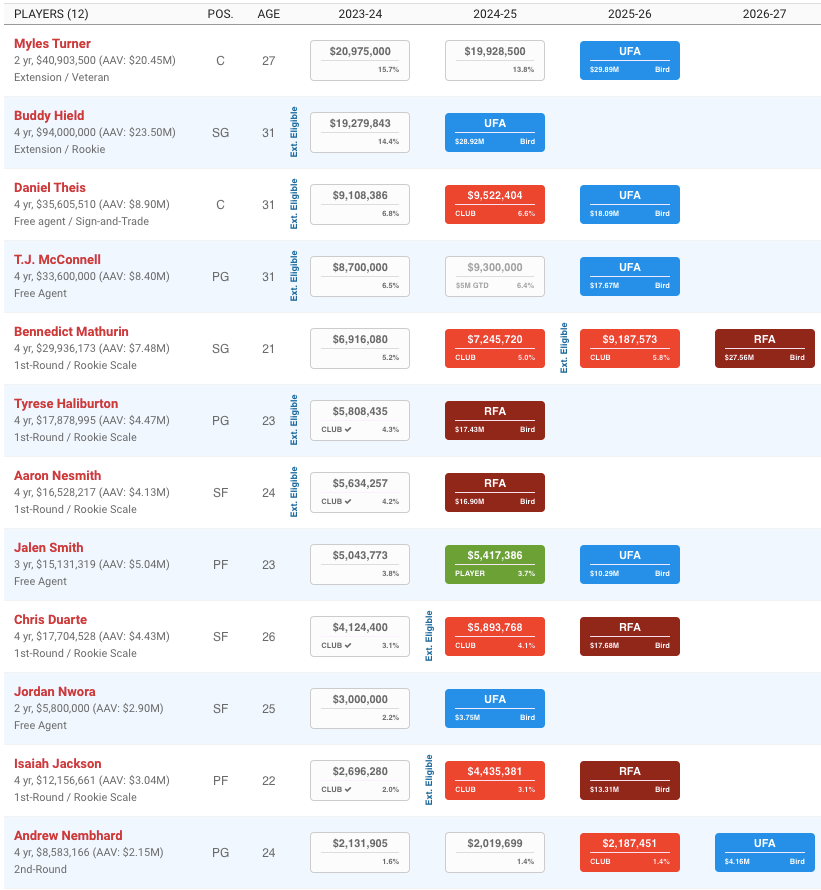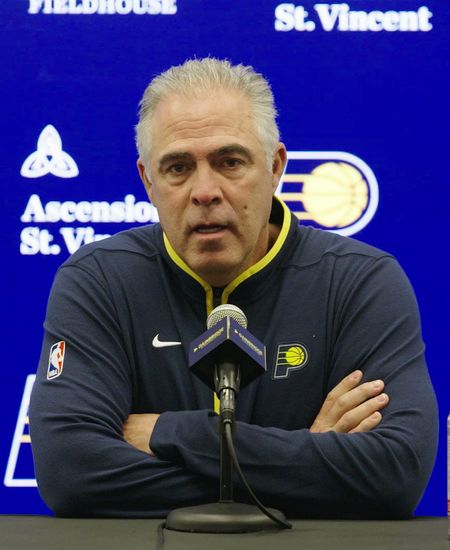I know the draft is around the corner and you're craving prospect reviews but I want to zoom out for a moment and talk about the new Salary Floor rule. The change is going to play a significant role in dictating how the Pacers approach the offseason, starting with how they handle their picks.
It forces the Pacers to add north of $20 million in salary before the start of the season and they have to do it with only a handful of open roster spots. Therefore, it's something we need to keep an eye on whenever we consider or propose prospective roster moves.
The New Salary Floor Rules
Let's start at square one. We've all heard about the Salary Cap, but less talked about is the fact the NBA imposes a Salary Floor. By rule, all NBA teams must spend at least 90% of the cap on player salaries. The reason the Floor is usually treated as a footnote is that, prior to this year, teams were permitted to stay under the Floor for the duration of the season. If they did not meet the threshold by the last game, they were simply required to distribute the difference to the players already on their roster.
However, the rule has changed. Now teams are required to meet the Salary Floor prior to the first day of the season. If they don't, they forfeit their right to an end-of-season tax distribution from the league's taxpaying teams.
Under the terms of the NBA's collective bargaining agreement, 50% of the league's luxury tax payments are allocated to the revenue sharing pool and that money is split up among the non-taxpaying teams. For a small market team like the Pacers, that revenue sharing distribution is a significant boon to their bottom line.
For example, last year the Pacers received the largest distribution in the league – $42.2 million – from a pool that totaled $404 million, about $240 million of which came from luxury tax payments.
How Much Do They Need To Add?
It's hard to say to the dollar because we don't know how many draft picks we're keeping yet. But let's start with what we do know:
The Salary Floor for next year is $120.6 million.
The salaries of the 12 players currently on our active roster total $93,418,359.
We have $1,833,758 in dead money from waiving Nik Stauskas, Malik Fitts, and Juwan Morgan, who we acquired from the Celtics in the Brogdon trade.
I assume we'll use all three two-way spots, which will add an additional $5,324,997 in salary.
So that puts us at $100,577,114 in salary, about $20 million below the floor, with three open roster spots.
What About the Draft Picks?
Here is where the rubber meets the road. On top of not wanting to bring in too many rookies, we literally can't keep all the picks and meet the Salary Floor (without making trades to take on more salary).
A baseline salary for each first round draft slot is determined by the Collective Bargaining Agreement. Just about every pick gets 120% of the baseline so we'll use that number in projecting their salary.
The 7th pick will add $6,516,000.
The 26th pick will add $2,499,480.
The 29th pick will add $2,394,960.
Those three salaries only total $11,410,440. In other words, if we keep all three first round picks and make no trades, we'll have used all of our full-time roster spots and we'll still be $8,612,446 below the Floor.
That's to say nothing of the 32nd and 55th picks, who would need to agree to two-way deals just to have spots on the roster.
A Change In Strategy
Ok, so we can't keep all the picks. Pritchard has stated his intention to trade some of them anyway, why does the Floor matter?
It matters because using the vast majority of our cap space over the summer will require the Front Office to change their approach.
Since Pritchard took over, they have been obsessed with flexibility. You may have heard him mention "optionality" in any number of press conferences. Take a look at the roster and you'll see that just about everyone is on a manageable, below market deal.

Moreover, look how the front office operated last year. When they couldn't find suitable trades for Buddy and Myles in the offseason, they took the cap space into the season. It gave us a lot of flexibility as a trade partner as we were able to engage in lopsided trades, potentially taking back more money than we sent out.
While we never took back a maximum contract like Westbrook, that flexibility allowed us to acquire Nwora without trading anyone from our team. More importantly, we were able to use the cap space to renegotiate and extend Myles mid-season, a deal I doubt either side would have agreed to over the summer.
Unlike last year, however, the wait and see approach is simply no longer an option. We are forced to spend the majority of our ample cap space during the off-season, lest we forfeit a major portion of our revenue sharing money.
So What Will They Do?
The first option is to get rid of picks so that we have open roster spots and then sign someone in Free Agency who would take us over the floor. Spending the money necessary to meet the threshold shouldn't be much of a hurdle but it requires the Front Office to use some strategy.
Again, let's look at last summer as an example. Part of the reason we had so much space is because we cleared the books in order to give Ayton a max contract, which Phoenix promptly matched. If the same thing were to occur this summer, say in a failed pursuit of Cam Johnson, we could be left with a fair amount of cash burning a hole in our pocket without many open roster spots or free agents worthy of big contracts left on the market.
Would we be forced to overpay lesser talents? Or at least front load contracts so that we meet the floor this year? It's a possibility.
The other likely path is that we make an imbalanced trade. For example, we've already heard a rumor about a deal with Charlotte and Gordon Hayward could be a very attractive trade target. His massive expiring salary would allow us to easily hit the Floor while maintaining flexibility next summer.
But does Charlotte's – or any other trade partner's – knowledge that we need to add salary drive down the price of taking on a bad contract? I'm not sure it does but it's something to think about.
Something else to think about is how many roster spots should we keep open heading into Free Agency. Stated a different way, how many draft picks should we keep?
Let me know what you think in the comments and don't forget the Salary Floor – for us or other teams – as you rosterbate your way through the offseason.
Subscribe to our email newsletter and unlock access to members-only content and exclusive updates.

Comments